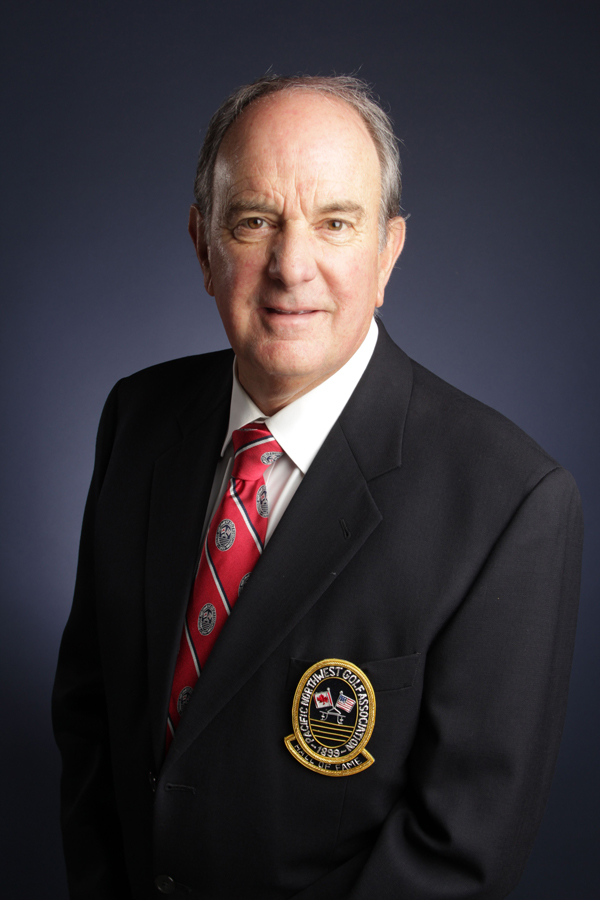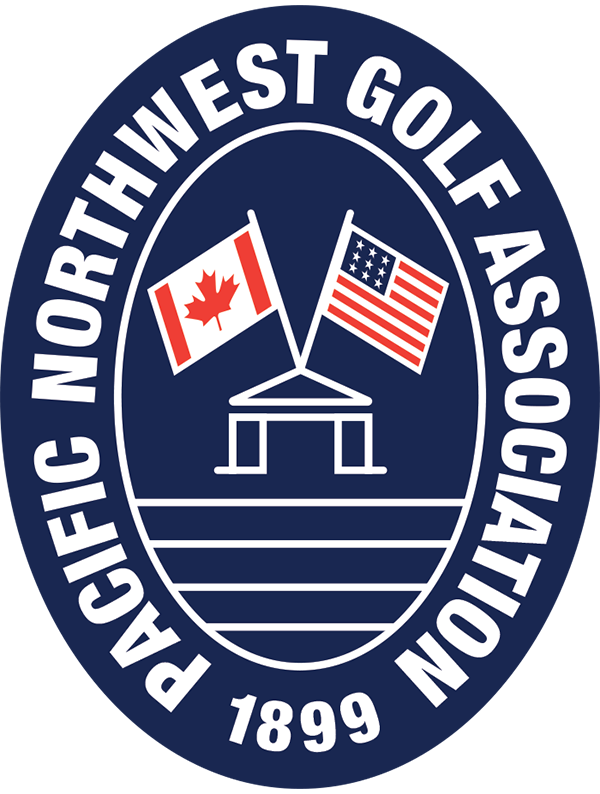Mike Gove – 2022 PNGA Hall of Fame Inductee
Born into a sports-oriented family, the legend among the Gove family is that, when Mike was born, he was driven straight from the hospital to a little league baseball game, where his father was coaching and his brother was playing.

Mike’s parents were members at Sand Point Country Club in Seattle, and he first walked onto a golf course when he was seven years old.
“I grew up around the game,” Mike says. “My parents would go to the course to play, and I’d hang around the clubhouse, chipping and putting in the practice area.” His three older brothers (Dennis, Gary and Doug) all played golf as well, so it was only a matter of time before Mike picked up the game.
The first tournament he played in was the Washington State Pee Wees, held at the 9-hole par-3 course near Green Lake in the north end of Seattle.
“I was nine years old,” Mike recalls. “I don’t remember what I shot, but I do remember it was a lot of fun.”
He eventually started working as a caddie at Sand Point, something which he continued to do even periodically during his college years. He says it was the only job he ever had, until he turned professional in his early 20s. “I had developed longtime friendships with several older members, and I’d continue to caddie for them when I came home during college breaks and between tournaments.”
Growing up in a sports-mad family, Mike played several sports with his brothers, but when he turned 14 during his first year at Nathan Hale High School, he began to focus on golf.
During that era of the late 1960s and early 1970s, there weren’t a lot of organized tournaments for junior golfers, but private clubs used to conduct one-day inter-club events for juniors, and Mike played in those. Because of that, he had the great opportunity of playing with, and against, really good young golfers.
At the time, Sand Point did not have a driving range, so he would take a shag bag and go to an empty area on the course between fairways and hone his game, hitting balls and going to pick them up again.
And he got good quickly. He qualified for the U.S. Junior Amateur three years in a row (1972, 1973, 1974), making it to the quarterfinals in the 1974 national championship.
During his years playing on the high school golf team, he recalls how good all the young players were. “There were probably seven or eight of us who could regularly break par,” he says. “The competition among local players was so good.”
It was this competition that gave Mike a strong belief in his golfing ability. Not recruited during his senior year of high school, he sent out 85 letters to different colleges, trying to find a school that would accept him and let him play on their golf team. One of the schools that offered him a golf scholarship was Weber State University, and he selected them because he felt he would have a chance to play right away, rather than having to wait a year or two.
And play he did. At the beginning of his freshman year, he finished third in the team’s qualifying rounds, easily making the team. By the third tournament, he was the team’s No. 1 player. And the fourth collegiate tournament he played in, he won.
“At that point, I felt I could clearly compete on that level,” he recalls.
He played four years at Weber State, and his record there is unmatched. He was the Big Sky Conference champion in 1976, and was named an NCAA Collegiate All-American three years in a row (1976, 1977, 1978). In the fall of his junior year, he won all five tournaments he played in. Overall, he won 11 individual collegiate titles.
But he was just getting started.
In 1978, he won the Pacific Coast Amateur, held that year at Sahalee Country Club in Sammamish, Wash. In that championship, he finished 15 shots ahead of the second-place finisher, a stunningly dominant performance against a field that included future World Golf Hall of Famer Fred Couples.
In the 1979 Western Amateur, he finished runner-up, losing the final match to future PGA Tour player Hal Sutton.
It was these two performances that earned Mike a spot on the 1979 U.S. Walker Cup team, and at the time this meant an automatic invitation to play in the Masters, which he did in 1980.
The Monday following the 1980 Masters, Mike turned professional. He successfully made it through the PGA Tour’s qualifying school in his first attempt. In 1981, he broke a bone in his finger, which sidelined him for nine months, and from then on he never experienced the success he had as an amateur player. His final year on tour was 1986.
Mike became a PGA club professional, working at Palm Valley Country Club in Palm Desert, Calif. for two years (1988-1989). He then took on the PGA head professional job at Astoria (Ore.) Golf and Country Club, staying there until 2002, when he then began a long career at Inglewood Golf Club, serving as their PGA director of golf.
In 1983, Mike married his wife Carrie, who he appropriately met at Sand Point Country Club. She was working at the club’s front desk, and Mike met her there during one of his breaks from playing on tour. They have three grown children – Christopher, Ashley and Doug.
Accomplishments
- U.S. Junior Amateur Qualifier – 1972, 1973, 1974
- U.S. Junior Amateur Quarterfinalist – 1974
- Pacific Coast Amateur Champion – 1978
- Southwest Amateur Runner-Up – 1978
- Western Amateur Runner-Up – 1979
- Walker Cup Team Member – 1979
- Big Sky Conference Champion – 1976
- Sun Bowl Collegiate All-Star Champion – 1977
- Individual collegiate titles at Weber State University – 11
- NCAA Collegiate All-American – 1976, 1977, 1978
- Morse Cup Team – 1977, 1978, 1979
- Hudson Cup Team – 1979
- Masters Participant – 1980
- Inducted into Pacific Northwest Golf Hall of Fame – 2022





